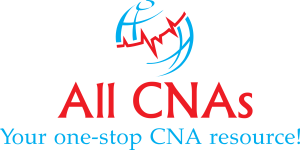Warm, Dark, Moist…OH MY!
Bacteria, Viruses and other pathogens prefer a specific type of environment to breed…warm, dark and moist. All healthcare workers should be familiar with this concept so they can be on the lookout for any warm, dark, moist places where pathogens may be lurking.
to breed…warm, dark and moist. All healthcare workers should be familiar with this concept so they can be on the lookout for any warm, dark, moist places where pathogens may be lurking.
Sometimes this is not as easy as it seems. Most of us are familiar with the fact that bathrooms are ideal breeding grounds for pathogens: bathrooms are usually a little warmer so we aren’t chilled getting out of the shower, we turn the lights off when we leave, and there are multiple water sources in a bathroom. That one is really a no-brainer; but what about “hidden” areas that we don’t really think about?
For instance, when applying lotion to a patient’s foot during foot care – we don’t want to put lotion between the toes. The area between the toes is usually warm (body heat) and dark (socks and shoes). By putting lotion between the toes, you may trap perspiration and other sources of moisture in the small spaces between the toes, leading to pathogen proliferation!
And when working with a catheter, it is essential not to allow bacteria or other pathogens to enter the catheter bag or catheter tubing. The pathogens will try to reach the bladder (the ideal warm, dark, moist environment) as quickly as possible, multiplying the whole way! Catheter tubing is generally an opaque yellow thick tubing, which effectively blocks out light and allows pathogens access to the warm, moist urine draining from the bladder. A Urinary tract infection (UTI) is sure to follow!
Skin folds are another hidden danger. Any place where skin comes into contact with other skin surfaces (the armpits, under the breasts, creases between the groin and leg and any stomach folds) can be at risk for pathogen growth, which can result in infections, rashes, sores or other issues. Placing powder or soft cotton cloths in these areas can reduce the moisture production and ultimately, reduce pathogens.
 Supplies can also hold hidden dangers. For example, you don’t want to put a disposable underpad under a patient that does not need it. Disposable underpads (often called “chucks”) are plastic lined. This plastic will hold the patient’s body heat against their body and often causes sweating. Since the sheets and blankets lying on top of the patient block out light…yep – now we have warm, dark and moist. Keeping an adult brief (we don’t call them “diapers” with adults) on an incontinent patient around the clock can hold moisture and urine and body heat against the skin. Removing the brief when they are in bed (and placing the patient on an underpad to collect the urine) allows air to circulate and keeps the urine from prolonged contact with the skin, which can help reduce bacteria buildup.
Supplies can also hold hidden dangers. For example, you don’t want to put a disposable underpad under a patient that does not need it. Disposable underpads (often called “chucks”) are plastic lined. This plastic will hold the patient’s body heat against their body and often causes sweating. Since the sheets and blankets lying on top of the patient block out light…yep – now we have warm, dark and moist. Keeping an adult brief (we don’t call them “diapers” with adults) on an incontinent patient around the clock can hold moisture and urine and body heat against the skin. Removing the brief when they are in bed (and placing the patient on an underpad to collect the urine) allows air to circulate and keeps the urine from prolonged contact with the skin, which can help reduce bacteria buildup.
There are many, many more examples of warm, dark and moist in a healthcare environment. But this doesn’t mean that we need to keep all the lights on and turn up the air conditioner. As healthcare workers, we simply need to be aware that warm, dark, moist environments may contribute to pathogen growth and do what we can to limit the development of these environments. Learning to recognize these dangers is the first step toward reducing pathogens in the workplace!
(1729)
